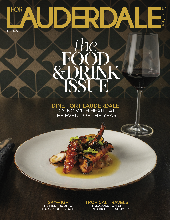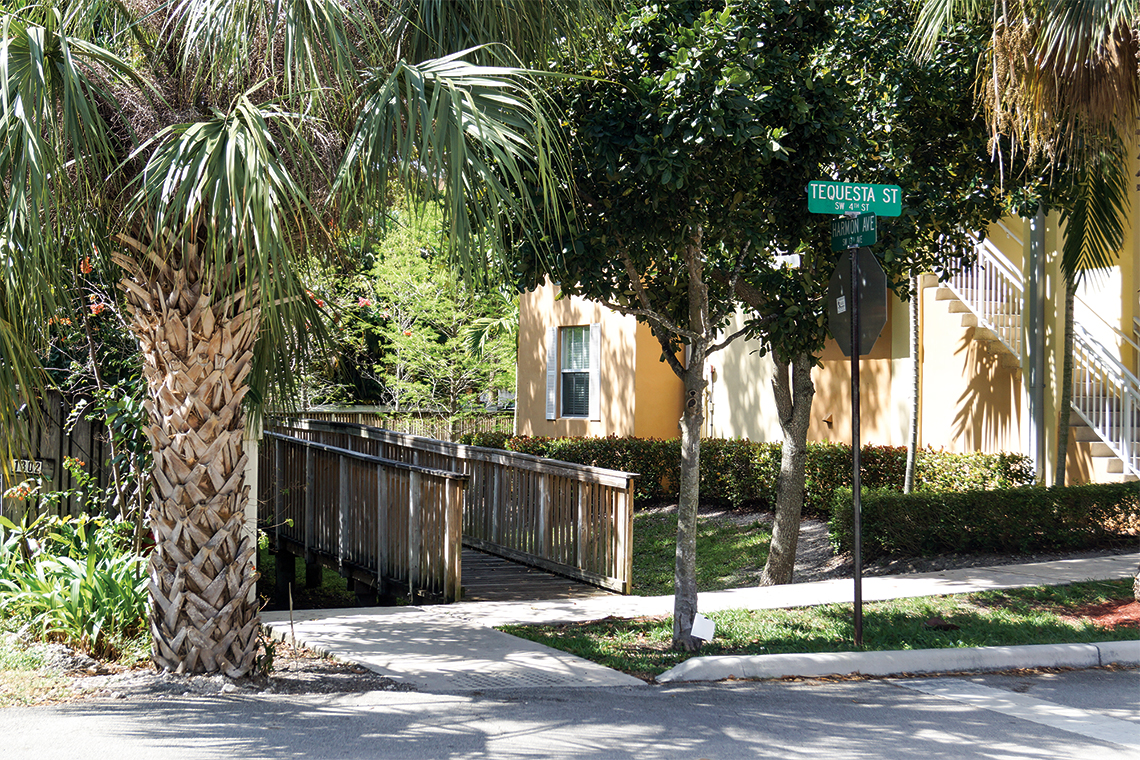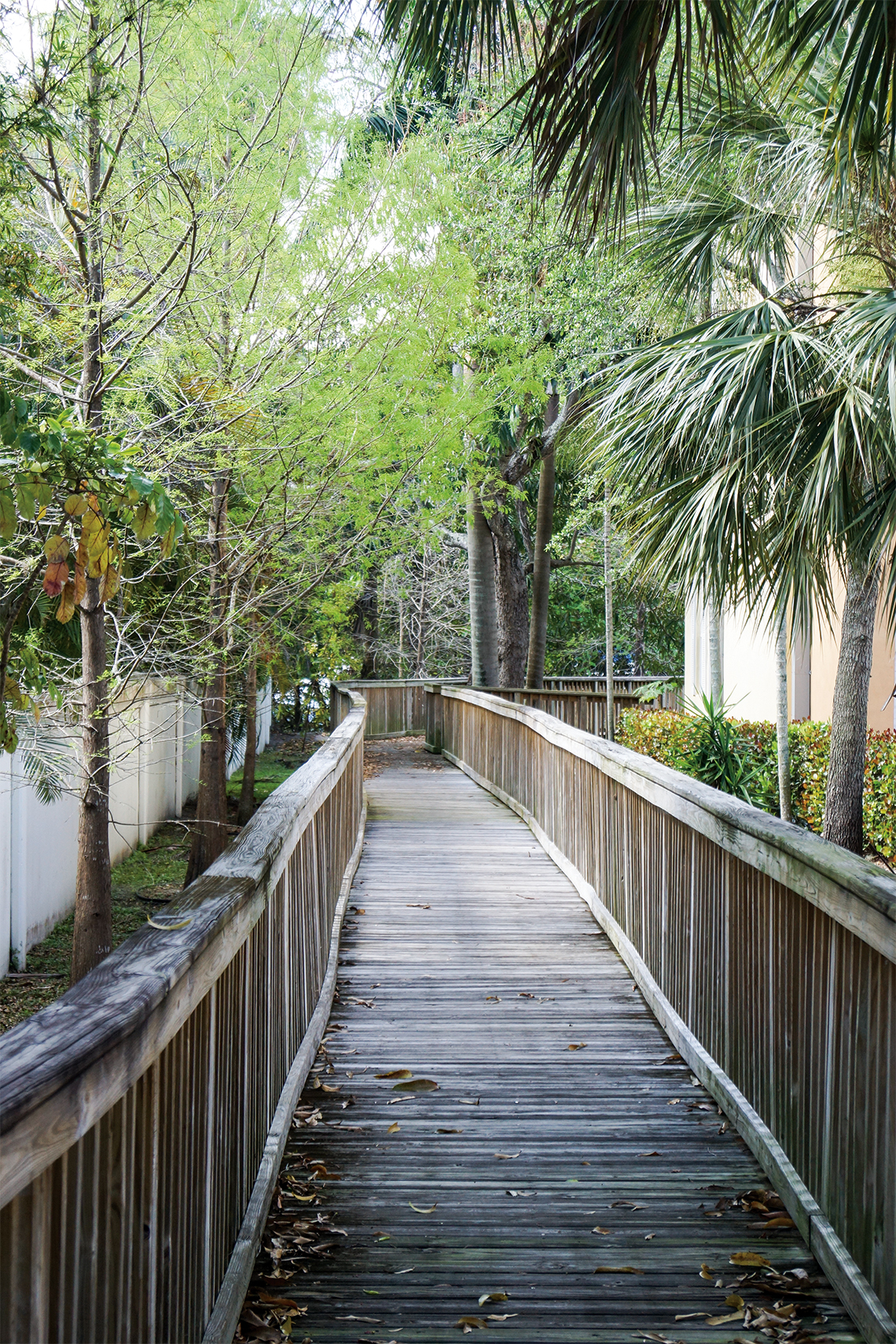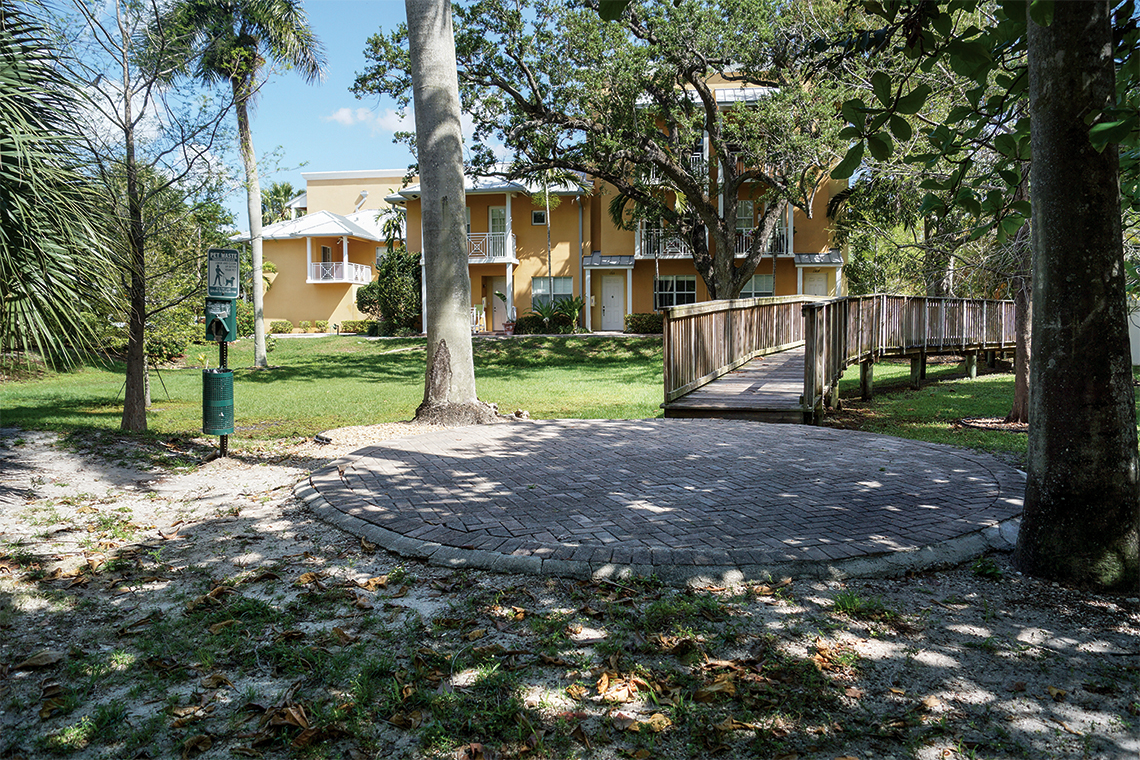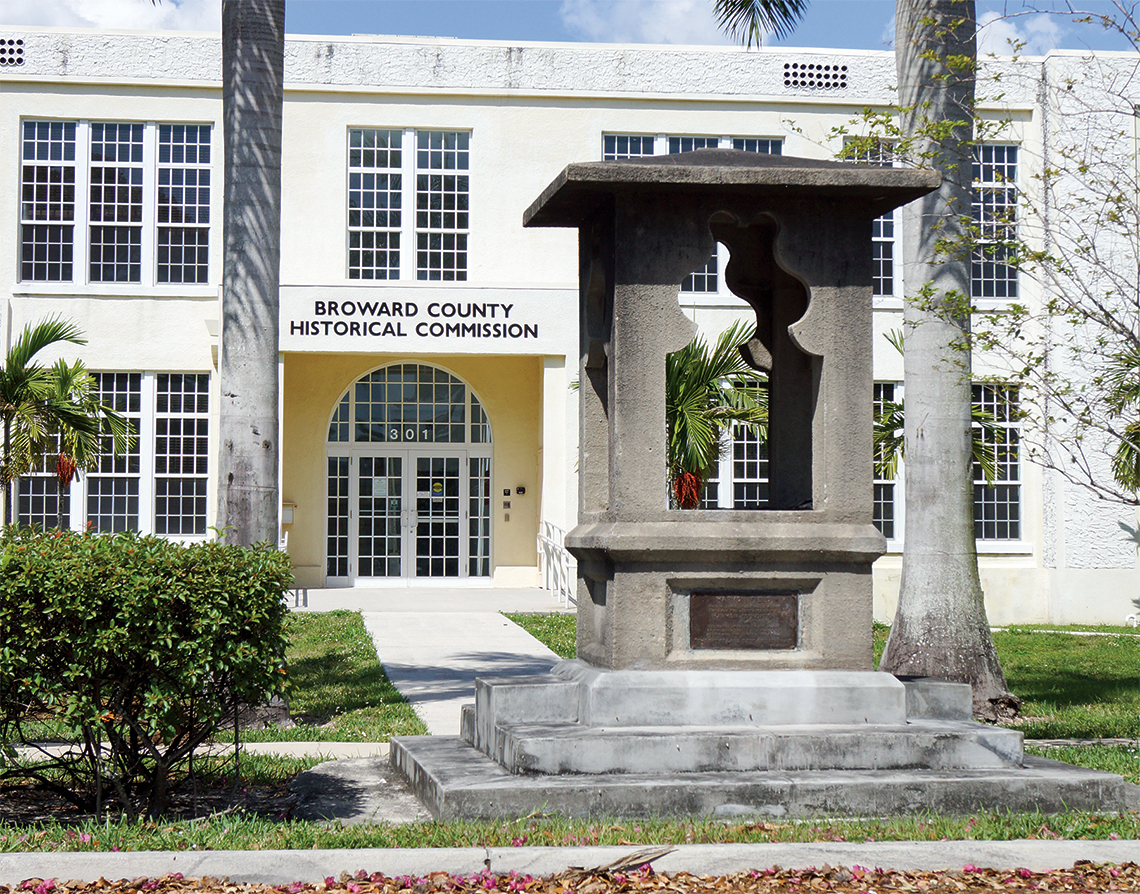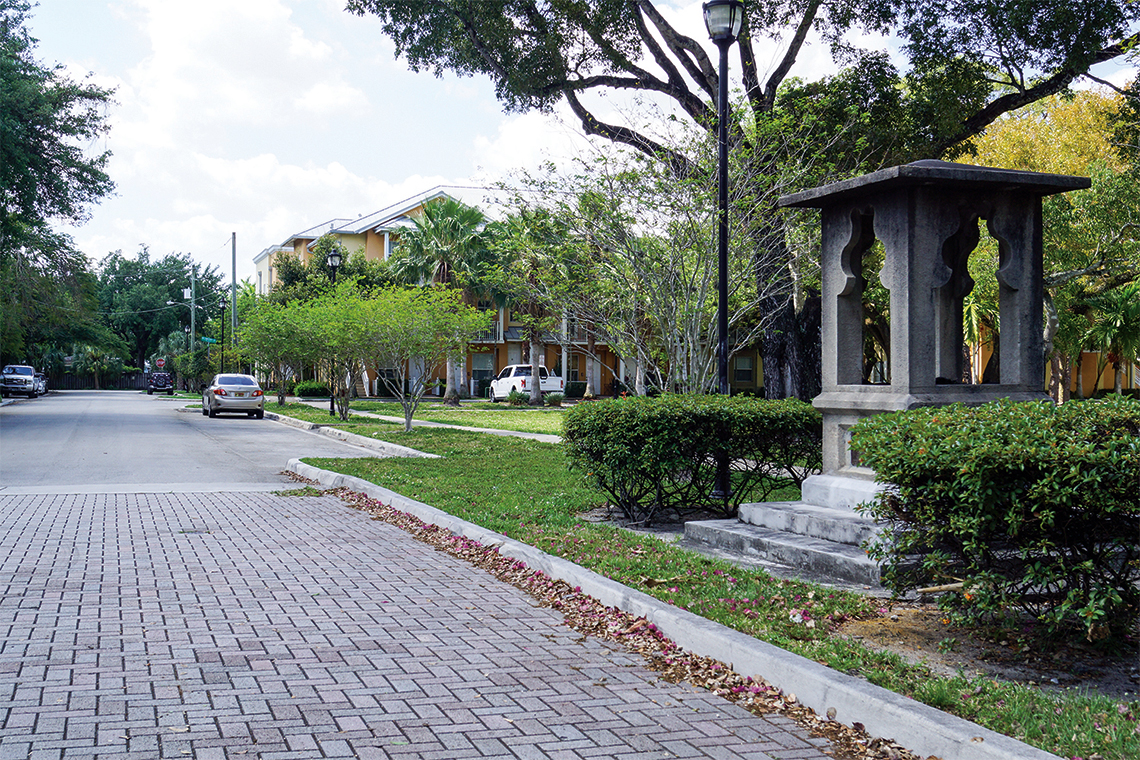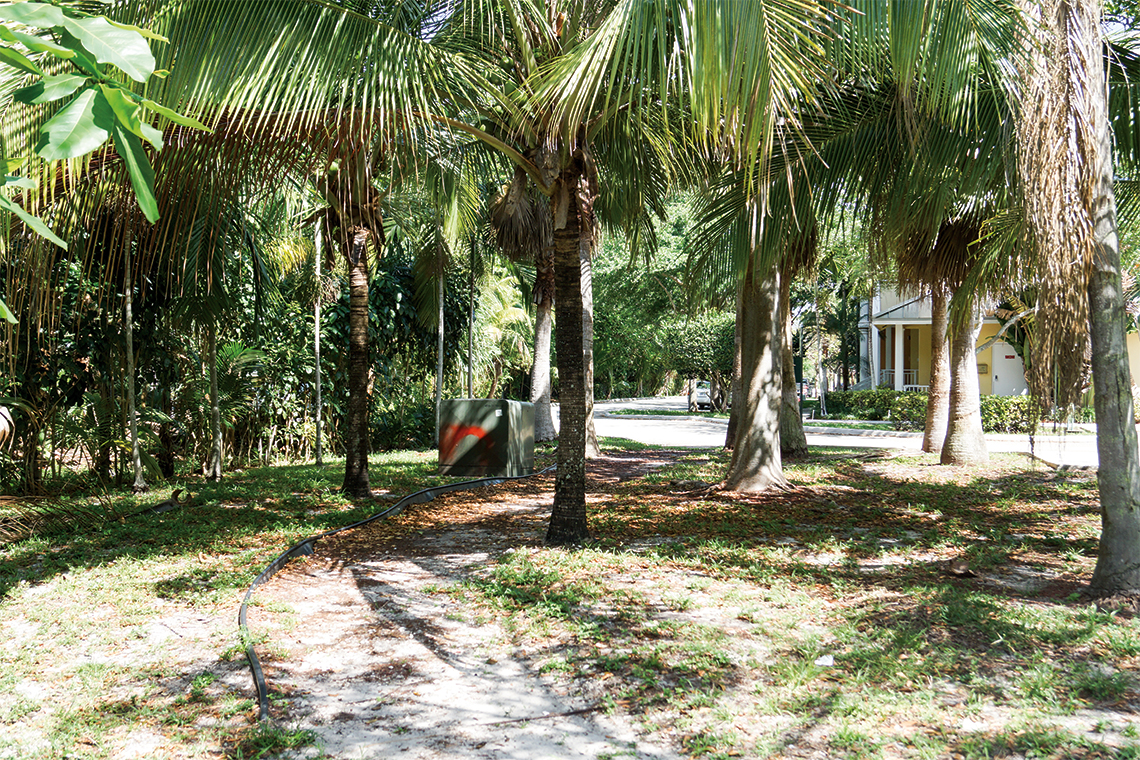In historic Sailboat Bend, there’s a popular riverfront path, one of a handful of places where it’s possible to walk right up to the New River. Locals enjoy watching the herons, manatees and other wildlife. “This is the last piece of Fort Lauderdale history,” Nena Trotogott says. “When people walk here, they sense that; they see that.” The path, about two-tenths of a mile, begins at the intersection of Harmon Avenue and SW Fourth Street, and runs south toward the river. But it feels like public space on the front end – a raised deck over drainage retention – and private property about halfway, as it makes a sharp curve and runs east to west along the grass between several townhomes and the river.
Last summer, a group of residents grew increasingly concerned that certain homeowners, whose backyards extend into the greenway, were clogging the path with cabanas and lawn chairs and treating the space like private property. They say that when Lennar Corporation built the townhomes, they promised the community a public path to honor a historic gift that set aside a recreational space for children. But Patrick Dirindin, who represents the townhome community’s homeowners’ association and lives along the river, says the land is private and his association pays taxes on it. Any agreement was made with Lennar and not the subdivision.
Is the path public or private? The answer depends on whom you ask. The city isn’t saying. When asked by Fort Lauderdale Magazine, a city spokesperson declined to clarify who owns the path and whether it is part of the historic gift. For old-timers like Trotogott, it’s become another symbol in the struggle between historic preservation and development.
It’s a story that involves confusion between public bodies. It pits residents of Sailboat Bend’s historic older homes against the modern townhome community on its western end. It perhaps even involves the city’s shameful efforts to resist racial integration in the 1950s. The backstory begins earlier than that, in the 1920s, when a young Fort Lauderdale became the only city in Florida and one of a handful across the country to win a generous grant. A brass plaque titled “Harmon Field” explains the nature of the prize. It reads in part: “This playfield was made ours through the assistance of the Harmon Foundation 1924/Dedicated forever to the plays of children, the development of youth and the recreation of all.”
But it appears the monument was moved from its original location. There is no playground. What happened to Harmon Field?
A place for children to play is what Fort Lauderdale’s early leaders had in mind when they lobbied for a grant offering 50 cities $2,000 each to build playgrounds. More than 700 cities and towns across the country applied for the award from the now-defunct Harmon Foundation, widely known for recognizing African-American artists, writers and educators. In 1925, Fort Lauderdale put its playground on a two-acre plot behind, or just west of, the West Side School, now headquarters of the Broward County Historical Commission, according to historical records and interviews. By accepting the grant, the city agreed the property would “always be known as Harmon Field” and “used in perpetuity for playground and recreation purposes.” Over time, those conditions would be forgotten and dismissed.
Forty years later, Florence Hardy, then-president of the Fort Lauderdale Historical Society, wrote the city manager after researching historical monuments. In a June 1965 letter, she describes a concrete drinking fountain that’s still there, directly in front of the West Side School and at the west end of Las Olas Boulevard.
Hardy wrote that the School Board built an addition to the school, not realizing it was city-owned property. To make up for it, they exchanged land with the city. “Little was to be said about it because of the gift of the land and the circumstances surrounding its loss to the city.” She references the city resolution that permitted the swap, which doesn’t mention Harmon Field or its restrictions. Breaching them should result in a hefty fine.
William G. Crawford Jr., a lawyer and historian who’s written on Harmon Field, has a theory: “These people in the ’50s deliberately screwed this up.” At the time, Fort Lauderdale was becoming a tourist destination, although its beaches remained racially segregated. The city was selling several properties for less than fair market value, notably the Fort Lauderdale Country Club, only to avoid integrating them. While the 1954 Brown v. Board of Education decision ended “separate but equal” schools, Broward schools remained segregated years later. In that climate, leaders may not have been overly eager to keep a playground for children of all races to share.
“There’s a lot of race that goes into this playground,” Crawford says.
It’s unclear when the monument was moved, or what land the city accepted in exchange. The debate over Harmon Field wouldn’t stir up again for another 20 years.
The Sailboat Bend Civic Association wanted more recreational facilities and green spaces, but they didn’t have the funds to pay for it. So they began looking into the curious monument at the west end of Las Olas, according to the association’s March 1989 newsletter.
In the early ’90s, Robert B. Dunckel, then-assistant city attorney, and James C. Brady, a lawyer who reviewed the matter for the civic association, agreed that a suit to enforce the Harmon Field restrictions would likely fail. Citing Florida’s statute of limitations, Dunckel argued the city wasn’t liable for damages. In 1995, Broward’s superintendent of schools wrote the city manager of his commitment to restore Harmon Field. But that never happened.
“The School Board screwed us and so did the city,” says 72-year-old Paul Boggess, who was president of the civic association around that time.
In 2002, Lennar purchased the 13.4-acre School Board site for $5 million. It agreed to restore the old West Side School and build affordable artist lofts and townhomes. Several civic association members and others involved in the negotiations with Lennar say the developer promised a public path along the river, and it would be called Harmon Field. “I was at that meeting when they promised us that,” Boggess says.
Residents and other parties say Lennar made a verbal agreement, and there is no contract. Early sketches of the townhomes show a path. Marketing materials and news stories from the time either show a path or refer to two acres of public park space.
Representatives of Lennar declined to be interviewed for this story.
Over time, other matters would require the civic association’s attention, but Harmon Field always came back into focus.
Last summer, the civic association took assistant to the city manager Hal Barnes along the path. Afterwards, it followed up with Barnes and city commissioner Dean Trantalis. Two residences had applied for permits to build private docks, wrote the civic association’s then-president Lage Carlson, attaching the land survey to his email. “It is troubling that their site plan does not show the path nor green way and it is a private docking facility,” he wrote. The city never responded. More recently, Trantalis didn’t respond to Fort Lauderdale Magazine’s request for comment. Barnes referred questions to a public information officer, who wrote that “The City is aware of the situation and we are currently working with the Sailboat Bend neighborhood to evaluate and address the matter.”
One of the homeowners Carlson named is Patrick Dirindin. As master board president of the Village of Sailboat Bend – that’s the modern townhouses, not the larger Sailboat Bend neighborhood – Dirindin oversees the subdivision’s property.
Dirindin says he plans to close public access to the path due to safety and environmental concerns. He’s tired of irresponsible neighbors not cleaning up after their dogs. “We have to do something because the residents are the ones taking the financial hit,” he says. In his email, Carlson says the townhouses were “sold as water view” property and would become much more valuable as “water front” property.
“What difference does it make what it is?” Dirindin asks. “It’s private property. It’s titled as such. There’s no issue here to be resolved.
“Lennar promised everyone the moon, and they didn’t give anybody anything.”
Then there’s the other promise, made many years ago – the one on the Harmon Field plaque.
“The gift of land,” reads the plaque’s last line, “is the gift eternal.”
